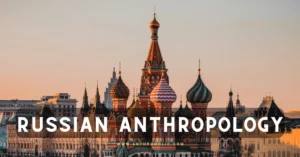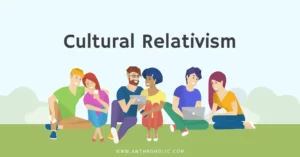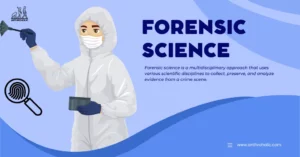AI Answer Evaluation Platform Live Now. Try Free Answer Evaluation Now
Prosimians
Prosimians are the group of animals who belong to the kingdom of mammals and the order primates. They include most of the animals, whether living or extinct, who belong to the suborder ‘ Strepsirrhines’ and the suborder ‘Haplorhine’. In the suborder Haplorhine, tarsiers are the only group of animals that are included under prosimians.

Prosimians are the most primitive survivors of the order primate and show characteristics that were similar to the ancestors of monkeys or apes. Although they are not similar to apes , monkeys or humans (collectively known as Simiiformes). Tarsiers are more closely related to Simiiformes.Simiiformes were earlier known as Anthropoids.
Prosimians are native to Madagascar but are also found in South east Asia and Africa.
Scientific Classification of Prosimians
The Scientific Classification of any species or organism is presented in an arrangement that is not fixed and can keep on changing based on the new discoveries of fossils, analysis of DNA sequences with new emerging technologies, reanalysis of conventional data etc. Based on the current updated arrangement we can classify Prosimians under the following classification:
| TAXONOMICAL CLASSIFICATION | COMMENTS | EXAMPLES | ||||||||
| ORDER | PRIMATES | Predominantly found in tropical and forest regions, around 500 species have been discovered so far. | Apes, Lemurs, gorillas, Humans etc. | |||||||
| Suborder | Strepsirrhini | Earliest known primate families belong to this suborder.Also known as ‘wet nosed’ primates. | ||||||||
| Infra order Infraorder Infraorder | Chiromyiformes Lemuriformes Lorisifermous | Family Daubentoniidae 1 genus, 2 species, one recently extinct,Dates back to the holocene.From Madagascar. Family Cheirogaleidae 5 genera, 25 or more species from Madagascar. Holocene.Subfamily Cheirogaleidae Phanerinae Family Lemuridae (“true” lemurs) 5 genera, about 18 species from Madagascar.1 Holocene fossil genus. Family Megaladapidae 1 genus, at least 10 species from Madagascar. 1 Holocene fossil genus. Family Indriidae3 genera and about 14 species from Madagascar. Holocene. Family Palaeopropithecidae 4 genera and 5 species from Madagascar, extinct within the past 2,000 years.Holocene. Family Archaeolemuridae 2 genera extinct and 3 species from Madagascar,extinct within the past 2,000 years. Holocene. Family Lorisidae 4 or more genera, 11 or more species from Africa and Asia. Miocene.Subfamily Lorisinae 2 genera8 Southeast Asian species. Subfamily Perodicticinae 2 or more genera3 or more species from Africa. Family Galagidae 4 genera of about 20 African species. 3 fossil genera.Miocene to Holocene. | Aye-ayes Lemurs(dwarf, mouse, and fork-crowned lemurs) True Lemurs Koala Lemurs, Sportive Wooly Lemurs, Sifaks, Indris/ babakoto. Sloth Lemurs Baboon Lemurs Lorris Pottos. Angwantibos Galagos, Bush babies | |||||||
| Suborder | Haplorhini | Also known as ‘dry nosed’ primates.Homo sapiens sapiens or Humans come under this order. | ||||||||
| Infra order | Tarsiiformes | Family Tarsiidae 1 genus, about 7 South Asian species.2 fossil species From the Middle Eocene to Holocene.The only family belonging from the haplorhini suborder that are classified as Prosimians. | Tarsiers | |||||||
The Haplorhini is further classified into the infraorder Simiiformes that is further divided into 6 families of new world monkeys, old world monkeys, apes and humans.
Characteristics of Prosimians
- Strepsirrhini
- 75% of the species are nocturnal and others are diurnal.
- They have a tapetum ( shiny, reflective layer in the back of the eyes).
- Most of the prosimians belong to this suborder. The term Strepsirrhini has its origin from Greek, that means ‘curved or bent nose’.
- The most distinguished characteristic of this order is the presence of ‘wet nose’ that refers to the rhinarium or wet naked area around the nostrils of the nose present in most of the mammals leading to a strong sense of olfaction.
- Moist nose is connected with the upper lip and the upper lip is further connected to the gum leading to restricted facial expressions.
- Their brain is smaller in size with respect to their body leading to a lower intelligence.
- They have an elongated snout.
- They also have a postorbital bar indicating their primitive nature.
- Their ears can move independently to capture sounds better.
- Most of the strepsirrhines are tooth combed with an exception of Aye-aye. This feature helps them in grooming.
- There is a claw on the second toe and the big toe is separated leading to a vise-like grip for locomotion.
- They can also enzymatically manufacture Vitamin C.
- Females have multiple sets of nipples and Y shaped uterus.
- For reproduction they have a specific breeding season.
- Tarsiers
- They are nocturnal.
- They have a fovea.
- They are dry nosed primates.
- Their body and head sizes range from 10-15 cm in length.
- Their upper lip is not directly connected with gum thus leading to varieties of expression.
- Thay have a postorbital plate.
- Their vision is the primary sense and they have trichromatic colour vision.
- They cannot manufacture Vitamin C enzymatically.
- They are very small in size.
- They have enormous eyes and long hind limbs, and fingers.
- They have no tooth- comb, but a unique dental formula.
- Their third toe and hind feet have claws for grooming purposes.
- They have soft velvety fur.
- They have a slender tail.
Frequently asked questions about Prosimians
References
- Smithsonian National Zoological Park (SNZP). 2008. Great apes and other primates: Differences among prosimians, monkeys and apes. Smithsonian National Zoological Park. Retrieved August 29, 2008.
- Cartmill, M. (2010). “Chapter 2: Primate Classification and Diversity”. In Platt, M.; Ghazanfar, A (eds.). Primate Neuroethology. Oxford University Press. pp. 10–30. ISBN 978-0-19-532659-8.




